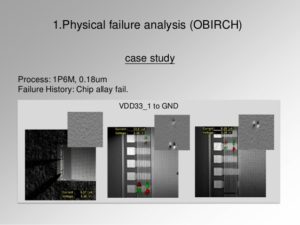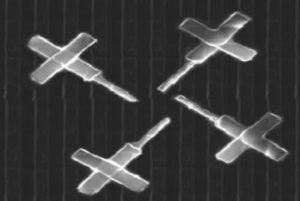Unlock IC PIC18F6720 Heximal
Unlock IC PIC18F6720 and recover the embedded Heximal from its memory, the Microcontroller cloning process will be done once the original firmware has been copied into the new MCU;
The EC and ECIO Oscillator modes require an external clock source to be connected to the OSC1 pin. The feedback device between OSC1 and OSC2 is turned off in these modes to save current. There is a maximum 1.5 µs start-up required after a Power-on Reset, or wake-up from Sleep mode.
In the EC Oscillator mode, the oscillator frequencydivided by 4 is available on the OSC2 pin. This signal may be used for test purposes or to synchronize other logic. Figure 2-4 shows the pin connections for the EC Oscillator mode.
The ECIO Oscillator mode functions like the EC mode, except that the OSC2 pin becomes an additional general purpose I/O pin. The I/O pin becomes bit 6 of PORTA (RA6). Figure 2-5 shows the pin connections for the ECIO Oscillator mode.
A Phase Locked Loop circuit (PLL) is provided as a programmable option for users that want to multiply the frequency of the incoming crystal oscillator signal by 4. For an input clock frequency of 10 MHz, the internal clock frequency will be multiplied to 40 MHz. This is useful for customers who are concerned with EMI due to high-frequency crystals.
The PLL is one of the modes of the FOSC<2:0> configuration bits. The oscillator mode is specified during device programming.
The PLL can only be enabled when the oscillator configuration bits are programmed for HS mode. If they are programmed for any other mode, the PLL is not enabled and the system clock will come directly from OSC1. Also, PLL operation cannot be changed “on the-fly”. To enable or disable it, the controller must either cycle through a Power-on Reset, or switch the clock source from the main oscillator to the Timer1 oscillator and back again.
A PLL lock timer is used to ensure that the PLL has locked before device execution starts. The PLL lock timer has a time-out that is called TPLL. The PIC18FXX20 devices include a feature that allows the system clock source to be switched from the main oscillator to an alternate low-frequency clock source.
For the PIC18FXX20 devices, this alternate clock source is the Timer1 oscillator. If a low-frequency crystal (32 kHz, for example) has been attached to the Timer1 oscillator pins and the Timer1 oscillator has been enabled, the device can switch to a low-power execution mode which can provide more convenience for Microcontroller reverse engineering.
Figure 2-7 shows a block diagram of the system clock sources. The clock switching feature is enabled by programming the Oscillator Switching Enable (OSCSEN) bit in Configuration Register 1H to a ‘0’. Clock switching is disabled in an erased device.
See Section 12.0 “Timer1 Module” for further details of the Timer1 oscillator. See Section 23.0 “Special Features of the CPU” for Configuration register details.
The system clock source switching is performed under software control. The system clock switch bit, SCS (OSCCON<0>), controls the clock switching. When the SCS bit is ‘0’, the system clock source comes from the main oscillator that is selected by the FOSC configuration bits in Configuration Register 1H. When the SCS bit is set, the system clock source will come from the Timer1 oscillator. The SCS bit is cleared on all forms of Reset.
PIC18FXX20 devices contain circuitry to prevent “glitches” when switching between oscillator sources. Essentially, the circuitry waits for eight rising edges of the clock source that the processor is switching to. This ensures that the new clock source is stable and that its pulse width will not be less than the shortest pulse width of the two clock sources.
A timing diagram indicating the transition from the main oscillator to the Timer1 oscillator is shown in Figure 2-8. The Timer1 oscillator is assumed to be running all the time. After the SCS bit is set, the processor is frozen at the next occurring Q1 cycle. After eight synchronization cycles are counted from the Timer1 oscillator, operation resumes. No additional delays are required after the synchronization cycles.
Tags: unlock ic dump archive,unlock ic dump code,unlock ic dump content,unlock ic dump data,unlock ic dump eeprom,unlock ic dump file,unlock ic dump firmware,unlock ic dump information,unlock ic dump memory,unlock ic dump program



